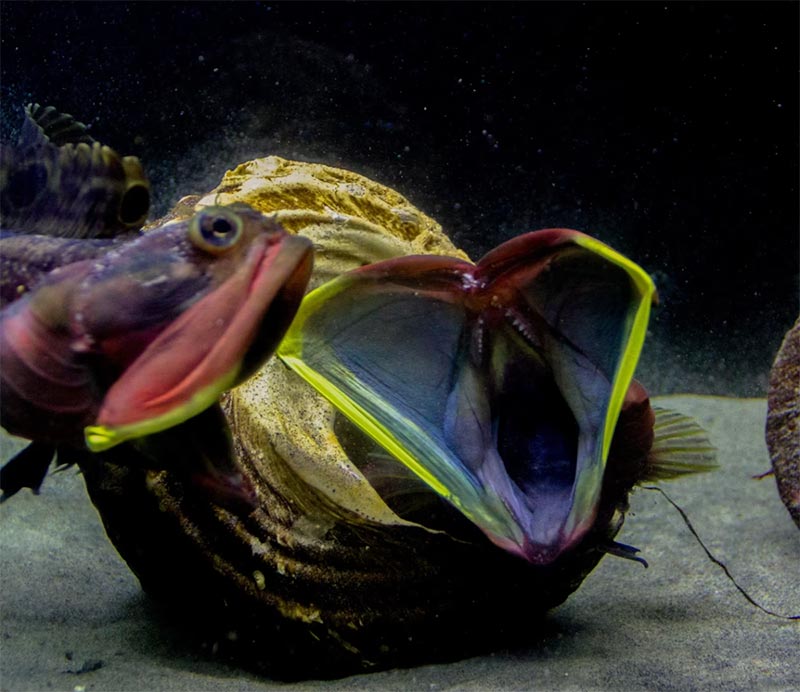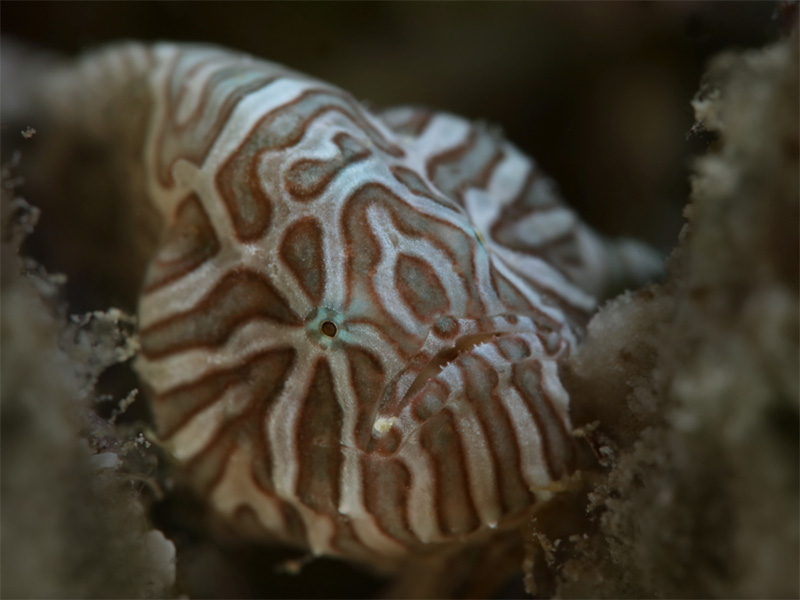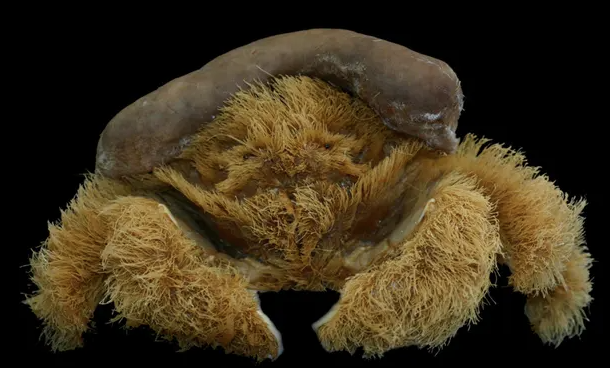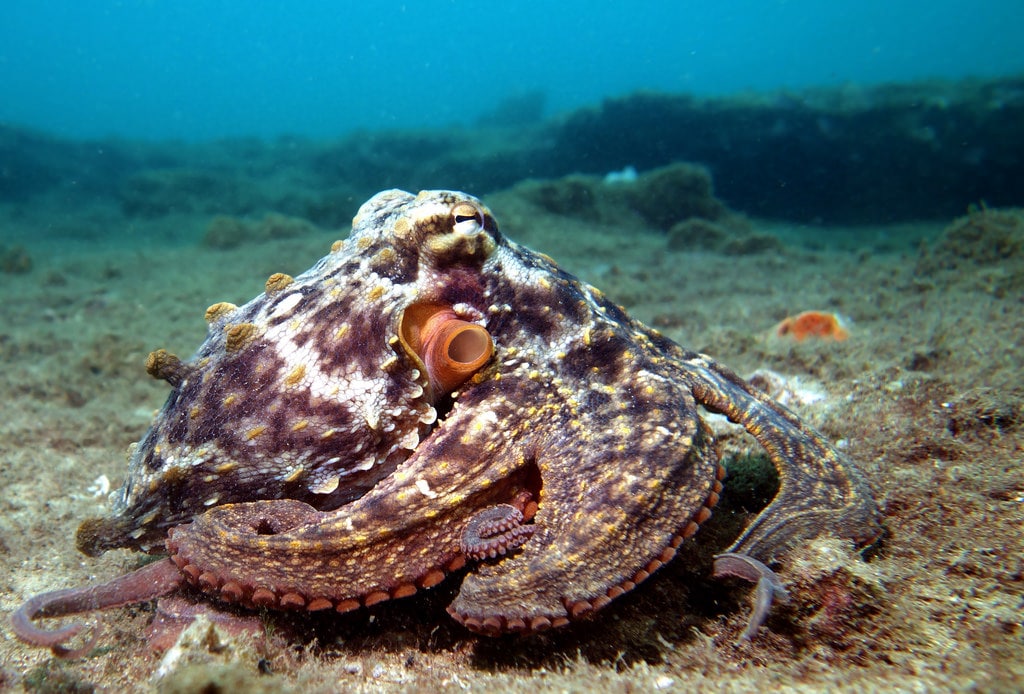The ocean is filled with Fascinating Fish! In our newsletter each month we share a new fish, and hope you enjoy learning along with us.

Sarcastic fringehead (Neoclinus blanchardi)
Good at: Showing off
Bad at: Table Manners
The sarcastic fringehead is causing scientists to scratch their own heads after capturing 15 males off of the coast of California in order to observe and better understand their wide-mouthed behavior. Normally thought to be a reflection of the size of food that an animal can eat, the sarcastic fringeheads’ gaping mouth is larger than the food they hunt and consume. This has led scientists to hypothesize that the gaping mouths are a means of scaring off enemies by flaunting their mouth muscles and apparent body size. The team of scientists studying this behavior believes that this is a way of avoiding confrontation and instead just settling arguments the old fashioned way – who can open their mouth wider?

Psychedelic Frogfish (Histiophryne psychedelica)
First discovered: 2009
Size: 5.9 inches
Habitat Depth: 16-23 feet
Good at: hide and seek
Bad at: self-defense
The Psychedelic Frogfish’s odd shape and hypnotizing patterns make it a standout member of the frogfish family. What it lacks in defense mechanisms, it makes up for in camouflaging ability. Covered in intricately patterned, loose, and often mucus-y skin, the psychedelic frogfish uses its scaleless body to squeeze into tight spaces, such as coral rubble, to make itself appear as part of its surroundings. The camouflage pattern on each fish is distinctive, much like human fingerprints.

Lamarckdromia beagle
Habitat: West coast of Australia
Good at: Dressing for any occasion
Bad at: Shaving its legs
This fluffy crab was only recently discovered off the coast of Western Australia. A team at the Western Australian Museum identified it after a family found one on the beach, and it joins over 40 genera of sponge crab within the Dromiidae family. While this one is rather fluffy in appearance, sponge crabs get their title from their use of sea sponges as little hats, helping protect them from predators.

Gloomy Octopus (Octopus tetricus)
Habitat: North Pacific.
Size: 25cm (at birth), to 1.5 meters.
Good at: Curveballs
Bad At: Being a good neighbor.
A close relative to sharks, skates arIf you happen to be snorkeling anywhere near the Gloomy Octopus that’s in a bad mood, you might have something thrown at you. Researchers have recently published a paper about this bizarre behavior, observing the Gloomy Octopus in Jervis Bay, Australia. An unusually high number of octopuses lives in the area (giving local spots nicknames such as Octopolis and Octlantis), which causes more competition for food and potential spaces to live. Researchers observed this close contact led to some grumpy octopuses expelling water and debris towards a neighboring octopus. Check out the videos to see this octopus-conflict-resolution in action!

